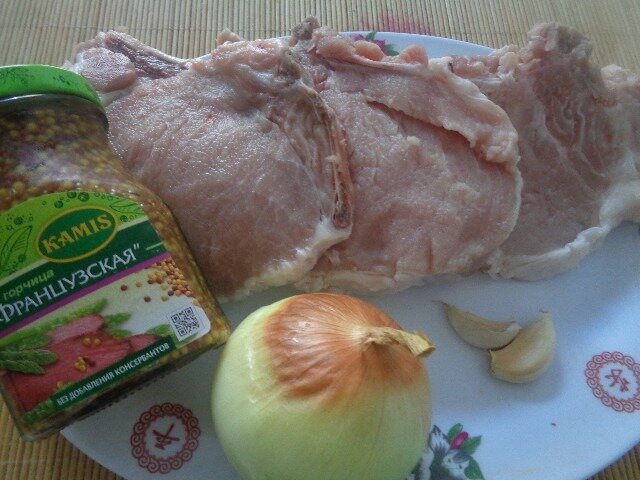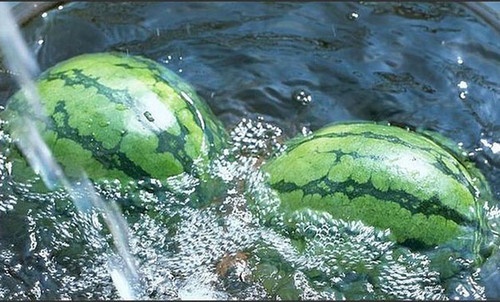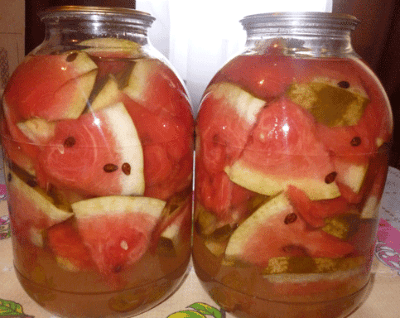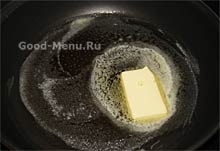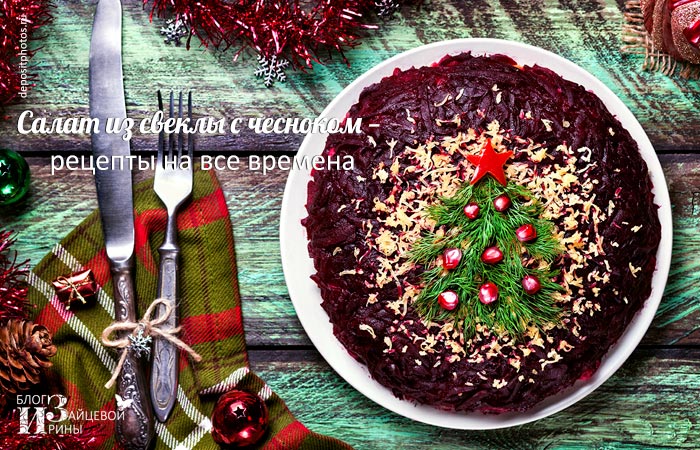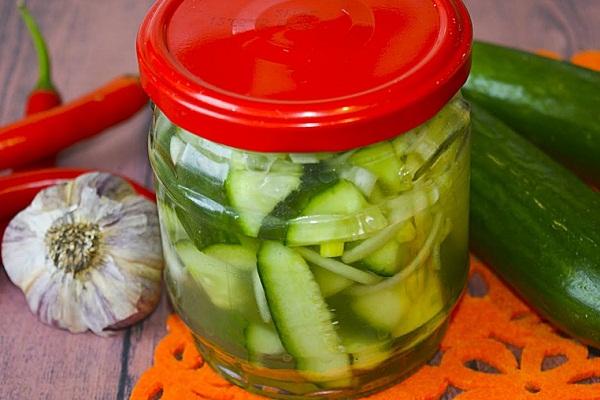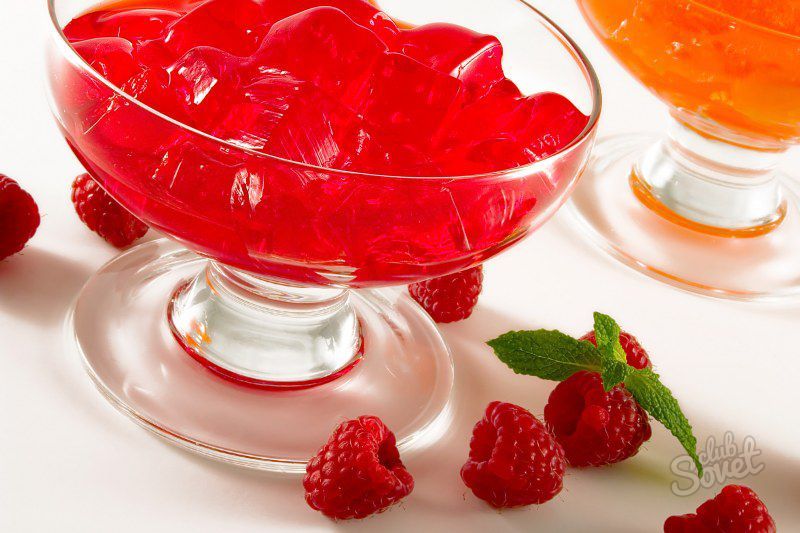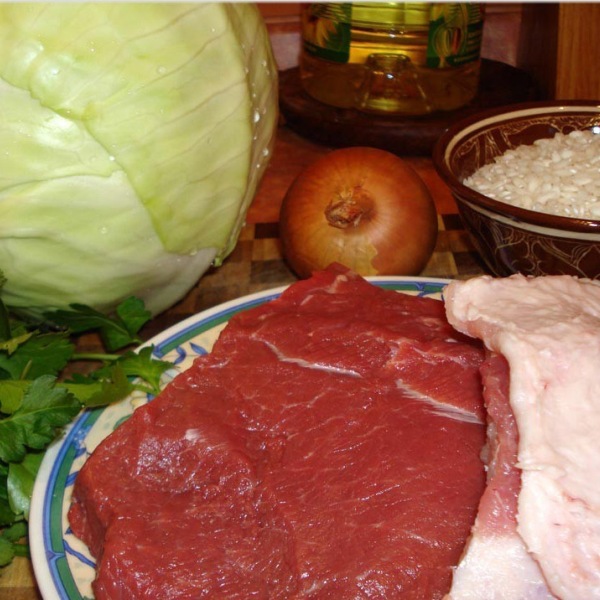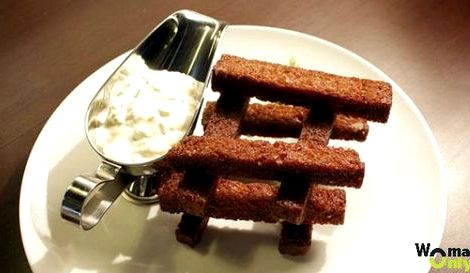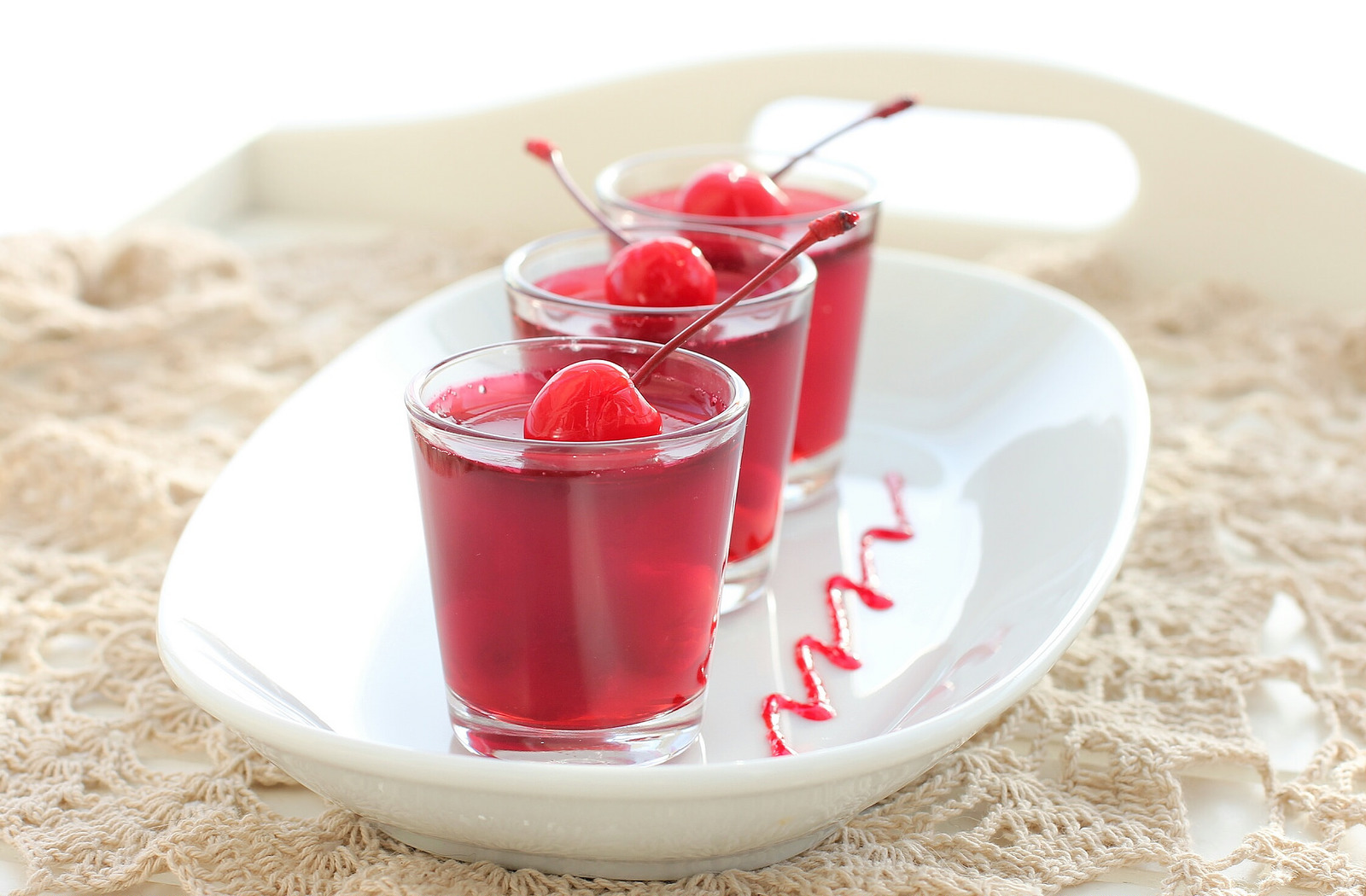What are the features of the national dishes of the Siberian old-timers. Siberian cuisine
If in central Russia an indispensable attribute of the New Year's dinner is the “Olivier” salad, in Siberia this role is performed by dumplings. The rare festive feast here costs without the local northern fish - at least on the table there will be a plate with salted omul or grayling. Almost every family has its own recipes of traditional Siberian dishes.
But a significant part of the Siberian culinary heritage today is lost. With the help of experts on the traditional cuisine, the Russian Planet has restored ancient recipes and dispelled several popular culinary myths.
Merchant fast food
Dumplings replaced Siberians first, second and even dessert. You can read about this in Gilyarovsky’s series of essays “Moscow and Muscovites”. He describes how the ten richest Siberian gold miners staged a dinner consisting exclusively of dumplings with different fillings. And for sweets, fruit dumplings cooked in pink champagne were served. A total of 2.5 thousand dumplings were eaten.
A century later, much has changed. The recipe for traditional meat dumplings has become different.
Real Siberian dumplings require at least four types of meat, ”says Igor Shein, the author of several books on the history of Siberian cuisine. - First, you need a game. And both feathery and a decadent: duck, goose, black grouse, and with them venison or sakhatina. Since the meat of a deer or elk is fairly dry, add something more fatty to it - pork or lamb. And finally, beef. From all this, the stuffing is made, which is seasoned with onions, salt and pepper.
The dough for traditional Siberian dumplings was also mixed in a special way - not on the water, but on the tea.
Why was this needed? - Igor Shein continues the story. - The fact is that the dumplings were made in the winter when they could be stored in the cold. For this purpose, special "rare" linen bags were used. In them, the dumplings gradually dried out, lost moisture, the fat in the mince was oxidized, and the taste of the meat, respectively, deteriorated. And tea contains antioxidants, which slow down the process of fat oxidation and help preserve the taste of meat in its original form. Another difference from the modern recipe is that the dumplings were fried in butter before freezing. Instead of boiling them afterwards, they were simply brewed with boiling water and kept under cover for several minutes. I myself cooked dumplings in this way, and was amazed at the richness of their taste.
Siberian merchants came up with their own version of fast food. Such food was a necessity for them: after all, inspecting their mines, sawmills and distilleries, they traveled hundreds of miles from home. Often they were forced to dine in the open field, where the distance to the nearest dwelling was measured in days of travel.
Traditional Siberian cuisine is clearly divided into home and road, - emphasizes Igor Shein. - Dumplings - a classic example of road food. Boiled water - and in a few minutes a full meal is ready.
Merchant "fast food" was not limited to dumplings. On the road, they took with them circles of frozen soup or borsch, iced cakes, which were kept on special poles in the yard, and even frozen milk. A standard lunch consisted of dumplings for the first, soup or porridge for the second, as well as tea or sbitnya for the third. Moreover, they were prepared in a matter of minutes in one samovar.
Almost up to the middle of the 20th century, special road samovars were widely used in Siberia, divided inside into sectors, ”says Konstantin Karpukhin, director of the Museum of the History of the Krasnoyarsk Railway. - In them it was possible to cook several dishes at the same time, for example, soup, tea and porridge. And all this was prepared much faster than on an open fire. Such samovars were initially used by coachmen, but then they became firmly established in merchant life.
Indeed, it is convenient: he chopped with an ax with a soup, put it in a samovar, poured water for ravioli and tea into another department, threw the cereal in the third, put frozen roll on the samovar pipe, and in half an hour you can sit at the table!
Fish stuff
Despite the variety of meat treats, traditional Siberian cuisine is, first of all, fish dishes. And noble. All that does not apply to sturgeon, whitefish and salmon, Siberians and fish do not count. In the Yenisei north, burbot is still harvested for dogs, and the eggs, bream, and sorogs that have entered the net are often given to pigs.
A good fish in Siberia is eaten raw or lightly salted - in this respect, Siberians, of course, are Asians, not Europeans. They believe that the taste of nelma or chira is revealed in its raw form much better than, for example, in a pie.
The bird-three Siberian fish cuisine is planed, rubanin and sagudai. Stroganina is a winter dish. The skin is removed from the whitefish, muksuna or nelma “stocking”, the front part of the head is chopped off with an ax so that it is convenient to rest it against the block or board, and further from the tail to the head, thin slices are cut off from the fish. They are dipped in salt, sometimes in pepper and vinegar - and immediately eaten.
A somewhat complicated version of this dish is rubanin. Fish free from the skin and cut into small pieces straight with the bones. Then the pieces of frozen fish are put in a large bowl with finely chopped onions and seasoned with salt and pepper. Next comes the key operation: the bowl should be shaken up properly so that the contents mix. After a couple of minutes you can eat fish.
For those who do not like fish with bones, there is a more time-consuming version of this dish called "split". Frozen fish slightly beat off with an ax butt, until the skin begins to separate. They take it off and continue to pummel with a butt on the fish until it turns out a tiny one, from which all the bones are selected. Further, according to the old pattern: a bowl, salt, pepper and onion. Eating this dish should be quick, until the fish thawed. In Western Siberia, another name was adopted for splitting - nonsense. So for a resident of Tomsk or Novosibirsk, “eating nonsense” does not at all mean “bad dinner.”
Restaurant chefs and culinary bloggers often confuse ruby and split with another traditional dish — sagood.
- “Sagudat” in translation from the Nenets language means “to eat raw,” explains Igor Shein. “So the real sagudai is just a thinly sliced, slightly salted fish.” The main thing is that it should be freshly caught. The indigenous peoples of the North, from whom the Russians adopted this dish, did not know either onions or black pepper. Therefore, Sagudai recipes, in which there are these ingredients, cannot be considered authentic.
In fact, the main difference between sapping from rubanin is that in the first case, the fish turns out to be salted, and in the second - pickled.
It is difficult to believe in this, but any native Siberian will prefer a small fish called “sponge” to the sturgeon, taimen and even nelme. It is one of the smallest representatives of the sig family, it reaches only 10–15 cm in length. It is valued for its special flavor: correctly salted coot smell like fresh cucumber.
In the 19th century, the Sosvinskaya herring, as it was then called tugunka, was delivered to the royal table and to the best restaurants in St. Petersburg and Moscow, says Igor Shein. - It cost fabulously expensive - several times more expensive sterlet. True, in those times the salt was differently salted. A special salmon salmon was used when the fish was interspersed with crushed ice.
Bite Tea
Another similarity of Siberian cuisine with Asian - is that any meal, whether it is breakfast, lunch or dinner, will certainly end with tea. Here they drink tea “with bite”, that is, with shangs, pies, jams, honey, cheesecakes and other sweets. According to Igor Shein, the word "with bite" in the western part of Russia has never been used.
Siberians had the opportunity to drink the highest quality tea, - continues Igor Shein, - because Chinese tea, delivered to Europe not by sea, but by land, was valued much higher. Accordingly, the best teas were sent to the west through Siberia. In European countries there was even such a term “Siberian tea”, which Dumas-father, the author of the “Gastronomic Encyclopedia”, put into use.
In the XIX century, the hierarchy of sorts of Siberian tea looked like this: the cheapest was brick, made from coarse lower sheets of tea bushes, then went loose, for the manufacture of which were medium and a small number of upper sheets, and the most expensive tea was floral.
Flower tea has nothing to do with flowers, - says Igor Shein. - This is a common misconception that even professional historians often fall victim to. For example, in one monograph where the analysis of customs documents of the XIX century was carried out, I read literally the following: “It is not clear why Siberian flower tea was so expensive. What are some special flowers in Siberia? How are they better than those that grow in the European part of Russia? ” In fact, the words "flower tea" mean only that tea is made from tips - the uppermost buds on the bush. In appearance they resemble unblown buds.
And then, and now Tipsov tea was far from being enjoyed by everyone, but Siberian merchants preferred it, concludes Konstantin Karpukhin.
Siberian cuisine was influenced by ancient Russian culture. With the development of intensive foreign trade, the introduction of a monopoly on a number of goods (vodka, caviar, red fish, fish glue, honey, salt, hemp) from the 17th century Russian regional cuisines are beginning to form (Don, Ural, Siberian, Pomeranian).
The rapid development in the 70s of the 19th century of railway construction in Russia brought the distant suburbs closer to the center. This led to the "discovery" of many regional old Russian dishes, quickly recognized nationwide. Such were the Ural and Siberian dumplings, Far Eastern pink salmon and Ketov red caviar.
The main products that made up the food of Siberians were those produced in their households. Milk, meat, vegetables, eggs, cereal products made up most of it. Eating was associated with the need to comply with the posts. Respected annually 4 posts lasting 130 days. All Wednesdays and Fridays were fast days, with the exception of holidays, when it was allowed to eat meat and dairy foods. The main place on the table Siberians held bread, in per capita consumption of which our country has always occupied the first place in the world.

Primary importance in the history of Russian cuisine and retained the first liquid dishes - soups. The assortment of soups — soup, soup, soup, pickle, saltwort, botvinis, okroshka, prison — continued to grow from the 18th to the 20th century. Different types of Western European soups such as broths, mashed soups, so-called filling soups with meat and cereals are well-established thanks to the love of the Russian people for the hot liquid brew.

In the diet of old-time Siberians who kept a lot of livestock, meat occupied an important place. Usually it was cooked. Siberians favorite dish were dumplingsIt was believed that the most delicious - “a mixture of three meats”, that is, the stuffing should have been made from beef, pork and lamb. They ate and moose as many old-timers hunted elks. At dinner, they often stewed lamb in the oven, fried them piglets- "asoskov", that is, dairy. Jelly was made from heads, legs, knees. For the winter, chaldons harvested beef sausages, and then, taking into account the experience of the immigrants from European Russia who had arrived, they began to make them from pork. One type of meat blanks were ham, which was salted and dried.

Special development received pies, that is, products in a shell of dough with the most diverse fillings: from fish, meat, poultry and game, mushrooms, cottage cheese, vegetables, berries, fruits, from various grains in combination with fish, meat and mushrooms.

A fish always used in the kitchen of Siberians in countless forms: steam or steam, boiled (boiled), telnaya, that is, made in a special way from a single fillet, boneless, but with skin, fried, tinkled (filled with porridge, onion or mushrooms), stewed, jellied, baked in scales, baked in a pan in sour cream, salted (salted), dried, dried in the wind and sun (vobla) and dried in the oven (suhisk). In Western Siberia, they ate frozen raw (sliced). Less common in Siberian folk cuisine until the mid-19th century. smoked fishwhich, on the contrary, has recently been widely used in three forms: cold smoked, hot smoked and smoked-dried.

Siberian vegetables were grown from pumpkins, pumpkins, turnips, carrots, beets, cabbage, and cucumbers. Planting potatoes were small, they cooked a limited number of dishes. As a rule, Siberians fried potatoes, baked draniki (cutlets from grated raw potatoes). Cabbage, beets, carrots were stewed with butter or put in pies. Cucumbers salted for the winter, and in the summer ate with honey. Such dishes as salads have never been characteristic of Siberian cuisine; they appeared in Russia as early as the 19th century as one of the borrowings from the West.
From the 17th century, the national Siberian delicacy was considered pine nuts and seeds (sunflower). Another delicacy was honey. Candy was rare, but sometimes for the holiday bought candy canes. Kvass on malt was a favorite and common drink. For tea we made weeds, leaves of the whitehead, groundwort, currants. Cooked flour jelly, dairy, and also berry on starch. Often made kissel from viburnum.

The daily meal schedule did not depend on the season. But in the summer there was more milk and in the winter meat. Adults usually ate three times a day, and children - four.
In Irkutsk, there are many places where our traditions are preserved and where you can taste real Siberian cuisine. You will find them through the catalog of organizations in the “Lunch” section under the heading “”
When winter comes and minus temperatures come, we often use the expression "Siberian frosts". For us, Siberia is associated with severe northern weather conditions.
And this is one hundred percent true. The vast Siberian region extends to the territories of north-eastern Eurasia. Siberian expanses limit the Ural Mountains in the west, the Pacific Ocean in the east, and the Arctic Ocean in the north.
Nowadays Siberia is the territory of the Russian Federation, although geographically and historically Siberia is a broader concept. Part of the territories of modern Kazakhstan and the entire Far East, these are the borders of Siberia.
Since the ancient times, such northern peoples as the Yakuts, Tuvans, Altaians, Dolgans, Shors, Siberian Tatars, Buryats, Nanai, Udege, Nenets, Khanty, Mansi and many others lived in the Siberian territories. The modern peoples of Siberia can be divided into several groups, depending on their ancestors - the Turkic peoples, the Mongolian peoples, the Tungus-Manchurian, Samoyed and Finno-Ugric peoples.
The most ancient peoples that inhabit Siberia are Chukchi, Itelmens, and Koryaks. Such a diversity of the ancestors of today's Siberians indicates a rich and diverse culture of Siberia. Now it becomes clear how among the recipes of the Siberian cuisine appeared dishes of Eastern nations.
On the one hand, the dishes of Siberian cuisine are similar to the culinary traditions of the peoples of the North. On the other hand, Siberian cuisine is much more diverse. This is due primarily to the rich natural diversity of the flora and fauna of Siberia.
The Siberian climate is harsh, the winters are long, and the summers are short, it's good that it is warm. And what is important in the Siberian frosts? Of course, do not freeze. In order not to freeze in the winter, Siberians are well warmed with clothes and nutritious, high-calorie dishes of Siberian cuisine.
The main ingredient of the Siberian cuisine is meat and meat products. Meat dishes in Siberia are a daily necessity, because meat charges the human body with energy. Until now, beef is more often used in Siberian dishes and then pork and lamb.
Historically, it is interesting that Siberians did not breed pigs at home. They were rather semi-wild pigs, which were released in the summer, and domesticated in the fall, fed for a couple of months, then killed. Usually, the meat was baked in ovens in large chunks or whole carcasses.
Famous are the recipes of the Siberian cuisine, according to which, even in our time, housewives cook tasty and unusual fresh, raw meat. Freshly or salted meat corned beef - a characteristic feature of the cuisine of the northern peoples. In Siberian cuisine, it is customary to stew meat, fry, bake in the oven or in the oven, as well as over an open fire.
From meat by-products (ears, tongues, hooves) they made cold and even aspic, smoked pork hams, made meat soups and stews. The most famous Siberian dish - meat dumplings. And in our time, Siberians whole families sit sculpt dumplings.
The classic Siberian dumpling recipe involves a combination of at least three types of meat in minced meat for dumplings. A special place in the Siberian cuisine is occupied by fish dishes. The fish were soared, fried, boiled, dried, dried, and still marinated and baked in the oven or on an open fire.
Siberian delicacy - lightly salted fish from Lake Baikal Omul. This fish has always been famous for its unique and delicate taste. The inhabitants of Siberia love to bake pies. Stuffings for Siberian pies are made from meat, fish, as well as vegetables or berries.
Modern life has its imprint on the original Siberian traditions. Nowadays, even Siberians prefer heavy meat dishes, light Japanese sushi.
Section:
Siberian cuisine, Siberian traditions
2nd page
Mind Russians Siberia will grow.
The blessed land and the cleanest ecology of Siberia are optimal for special settlements, penal servitude and camps, in every possible way contributing to the enlightenment and strengthening of the Russian minds.
FOOD OF RUSSIAN SIBERIANS
DISHES OF TRADITIONAL SIBERIAN KITCHEN
Traditional food of Russian Siberians
With the beginning of the Russian development of Siberia is associated with the traditional bread and flour nutrition of its inhabitants. However, their own agricultural development lagged behind the commercial, which created serious difficulties in providing Siberians with bread.
Until the last quarter of the XVII century. the bread was mostly brought in from the Urals. But gradually its food base was established. For the Yenisey region the most important role was played by the beginning of the agricultural development of the southern regions in 1710-1740.
The pioneers of the region experienced serious difficulties in reorienting food to the products of hunting and fishing. Thus, in the northern regions, Russian pioneers were forced to bake cakes from ground dry fish and caviar, and fish became the main product.
The technology of harvesting fish and its processing was taken over from the local population (yukola - dried fish, porsa - dried small fish, Yurok - dried boneless). The main method of harvesting fish was salting. The fish was gutted, plastered, and without removing the scales they were salted at the fishing ground, in the winter they were frozen. So, MF Krivoshapkin wrote in 1857 that in the city of Yeniseisk “on the bank of the Yenisei, fish was folded into a pile of wood without any supervision”.
They mined fish in huge quantities. Only on the Angara in the "pits" every year they caught 2.5 thousand poods!
Received in Siberia widespread and fish oil, almost never used in European Russia. Cooked it, peretaplivaya in boilers pieces of fish with low water content. Especially good was considered fish oil when baking pies. And at a later time, fish is a traditional Siberian food, so far in the old-time villages, not a single holiday table is complete without fish pie.
The first Russian immigrants actively included in their diet and other gifts of Siberian nature. Everywhere they ate wild bockoon, garlic, sarana, wormwood, flask, and ramson. Cooked cabbage soup from the grass, similar to rhubarb and called here "cabbage", or from the grass, which the Russians called "borsch".
Of course, a significant role in nutrition was played by hunting products: for example, in documents of the XVII-XVIII centuries. Bears, venison, sokhatina, hare, partridges, hazel grouses, geese, etc. are mentioned.
With the development of its own farming, rye bread becomes the staple food. It was baked from sour dough, which was fermented most often with residues of dough from previous baking in a special wooden dish (“yogurt”, “deja”). Of course, they were fermented with yeast, beer or kvass.
Barley (barley) flour was sometimes added to rye bread. Depending on the flour grade, the bread was divided into sieve and sieve. They baked bread on a clean swept hearth of a Russian oven in the form of round rugs. In lean years, ground sarana, wild buckwheat (“kandyk”) were added to bread, and in the North - fish meal and even moss.
In addition to rye, spring and winter, they grew barley, oats, buckwheat, gopox, spelled. All of these cultures were for the preparation of flour and further use in food in different foods. So, from rye and barley, after first germinating it, they made malt, and then brewed beer. Wheat was baked kalachi, grated and krupchatye (flour flour - "only from the kindest wheat, flour of the highest grade).
Pies were considered favorite Siberian foods - they were baked in Siberia for more than fifty kinds. Cakes could be hearth, from sour dough, on the hearth of the oven, and spun (fried on a thick layer of butter), from sour or unleavened dough.
Pies were stuffed with fish, berries, meat, vegetables, cottage cheese, cabbage, eggs, bird cherry (like fish and bird cakes were especially loved by Siberians), stuffed with other dough, etc. The variety of types of pastries and pies made it possible to diversify table and "modest" and in fasting days.
The main cake was “juicy”: if it was stuffed on top (with curd, vegetables, bird cherry), it was poured with sour cream, then “shangi” was obtained.
"Fold" - pies with a filling, tied at the edges.
There were also commoners ("brushwood") - twisted figurines made from unleavened dough fried in oil.
The cakes were served both as a separate dish, and as “snacks” to tea and as an obligatory additive to hot liquid dishes, and to each of them - special ones. To cabbage soup made from fresh cabbage - buckwheat porridge cake; sour - with salted fish; for noodles - meat pie; to the ear - carrot cake.
Liquid dishes were prepared from flour — talkers, trowels and thick ones — porridge, salomat, kulag, steaming them in a Russian stove. Siberians especially liked the salomat: it was on every holiday table. Were loved oatmeal, oatmeal kissel, kissel from steamed liquid rye dough ("burduk").
Everywhere pancakes were baked, both from sour and unleavened dough, pancakes, millet and millet, oatmeal and buckwheat, thin and flavored.
“Pancake frying pans of various sizes” were in great demand in Siberia, - noted in the custom Siberian books of the 17th century. From whole and crushed grains cooked porridge, both everyday and for ritual purposes, "kutyu"; from the bread "zhita" did a variety of drinks.
It is necessary to dwell on meat food: for Siberia it was immeasurably more important than for European Russia. There, meat dishes were rather festive food, here - everyday. This was associated not only with the widespread development of animal husbandry, but also with the vital need for meat in a harsh climate.
Academician I.G. Gmelin, traveling in Siberia in the 40s. XVIII century., He noted that "edibles are very cheap, excellent fish, meat and game - in abundance." Meat was fresh for food - “fresh”, salty - “corned” and dried - “sagging”.
In winter, the meat was dipped in water, allowed to ice up and put in tubs, covered with snow. Meat boiled, extinguished, fried, baked in dough or, in large pieces, in a Russian stove. Meat dishes were varied: jelly, cold from tongues, ears and lips, pork hams, meat broths, meat soup, roast meat, meat and vegetables, "chicken" and others.
However, dumplings were now and still considered to be the favorite traditional dish of Siberians. N. M. Yadrintsev wrote about it this way: “Dumplings are consumed in an incredible amount. Meat is available to the peasant. " Dumplings sculpted the whole family. Men usually chopped meat in the troughs, women kneaded the dough, the children rolled it out, and sculpted it together. Then they were dried in the oven or frozen and stored in the chests. (It is believed that the word “pelmeni” comes from the Permian “Pernjan” and then was brought to Siberia). Dumplings ate with butter, with sour cream, vinegar.
Many dishes of a modest and lean table were eaten and washed down with kvass, beer. So, grated radish, steamed vegetables, grated berries, salted onions, jelly were poured with kvass.
Along with kvass, tea was widely distributed in Siberia. Tea was supplied from Central Asia and from China. In general, Siberians used "brick" tea. Thus, in Eastern Siberia, various beverages were brewed from it: “zaturan”, with the addition of salt, milk, and flour-boiled flour, with the addition of crushed wheat grains. Especially Siberians loved to drink tea with milk.
A.P. Stepanov, the first governor of the Yenisei province, wrote: “In every village one can find samovars. Most of the peasants drink tea through sugar (with bite). ” And N. M. Yadrintsev noted that “Siberian tea is always accompanied by bites, pies and other things.”
Traditional for Siberia were “berry water”, infusions on currants, herbs, honey drinks. Pure Siberian, ancient drink was “cedar milk” made from crushed cedar nut.
Horticulture was also developing in Siberia, which allowed the use of traditional Russian vegetables for food. For the whole year, peasants and townspeople grew and stocked carrots, turnips, beets, radishes, cabbage, peas, cucumbers, pumpkins, onions, and garlic.
From spices sowed poppy, mint, sage, anise.
Potatoes became especially significant for Siberians. It is believed that they began to plant it in the first half of the XIX century, but in the "Topographical description ..." it is noted that potatoes were grown in the Tobolsk district at the end of the XVIII century.
The peasants added turnips to porridge, they hovered in the oven, stuffed cakes with it, steamed and baked spruce with wort.
The cabbage for the winter was salted or leavened, as shredded, and as the head of cabbage, whole.
Potatoes were boiled, added to vegetable and cereal soups, in soup or boiled as a seasoning to dishes. Very rarely fried potatoes with butter or bacon.
Stews were cooked for lean meats from peas.
Mostly Siberians were engaged in melon growing. In Minusinsk district, everywhere peasants grew melons and watermelons.
For the whole winter, pine nuts were stored everywhere. Cedar forests were one of the most valuable communal lands. Oil was squeezed out of cedar nuts, and the main thing - nuts were the same treat at parties and gatherings. Oil squeezed mostly from hemp, and also from flax.
From dairy dishes most used cottage cheese, sour cream, cheese. Cheese was made from cottage cheese with the addition of eggs and keeping under the yoke. But it should be noted that Siberian cows were unproductive and gave an average of 3-4 milk shakes. In winter, the milk was frozen in "circles", it was convenient to store or take them on the road. Sometimes, before freezing, milk was mixed with raw eggs.
On the table of the Siberian stood mushrooms and berries prepared for use. Mushrooms boiled, salted, fried. It is curious to note that in many places only mushrooms or white mushrooms fell under the term “mushrooms”. Mushrooms are used as a filling for pies.
Berries: currants, raspberries, strawberries, strawberries, honeysuckle, bird cherry, blueberries were eaten fresh, dried for the future, added to flour dishes. Everywhere dried bird cherry was ground into flour and added to baked goods or used for cooking jelly. A special place occupied in the diet of Siberians cowberries.
Thus, the food in Siberia was eclectic, combining Russian traditions with new types of food and new Siberian nations. Many Siberian dishes and methods of their preparation subsequently spread throughout Russia.
The most important condition for the daily eating of food according to Christian tradition was the observance of the traditions of the feast. At the beginning and at the end of breakfast, lunch, dinner was a prayer.
PRAYER BEFORE TASTING FOOD.
Eyes on You, the Lord hope, and You give them food in a timely manner, you open Your generous hand and feed everything that lives with your blessings.
PRAYER AFTER TASTING OF FOOD.
We thank You, Christ, our God, who has filled us with your earthly blessings, without depriving us of your heavenly kingdom.
A special, sacred place in the nutrition of man, and everyday rituals held bread. Bread and salt were presented to the guests of honor; bread represented a life-giving principle. In Siberia, they said - do not knead the dough, but “create” bread.
The process of baking bread was equal to the process of creating the world; It involves the sacred elements - fire, grain, water. "In the evening, the carpet is asleep, it can not be cut." A whole (non-fresh) loaf of bread could be cut only in the morning. Bread personified the house, life.
Speaking about the peculiarities of the food of the Russian old-timers of Siberia, it is appropriate to cite a number of statements by researchers of this region.
I. G. Gmelin: “Grain is very cheap here, as well as bulls and pigs. The river is rich in fish. Sturgeon are fat, so in the boilers where they are boiled, there is fat in the finger thickness. Game: elk, deer, roe deer, hares, etc., from birds — pheasants, partridges, swans, wild geese, storks — all this costs less than beef. ” (From the description of the market in Tobolsk in the XVIII century.)
S.P. Krasheninnikov: “Going in winter for sables, traffickers take 30 poods of rye and 1 pood of wheat flour per person, and bring the sour milk with them or do it on the spot. And if the sourdough and thick leaves, then many are sick and dying, and, as a matter of fact, there are forced breads to eat. They keep the sourdough in a special bark vessel - “Bourde”, which is very cherished, because their whole grub in bread and kvass consists ”.
A.P. Stepanov: “For all, without exception, the peasant of the Yenisei province guesses sieve bread. The poor white bread is every Sunday, every holiday, fish 3-4 times a week, soup stewed with sour cream, porridge with milk and milk. The peasants of average wealth soup with meat every day, thin oatmeal with milk or salomata with butter; sometimes roast lamb, fish several times a week. On holidays they increase their table with jelly and pancakes or waffles. The table of the rich is from similar supplies, but in greater quantities, it always has 4 dishes and soft (ie white bread) every day, and fish pies, and the fish are more famous. Dried strawberries and strawberries are eaten boiled with honey. ”
A.P. Belyaev: “The owners, the simple peasants - Siberians, very cordially welcomed us; the same neat hostesses immediately set the table and set the dishes. Imagine our surprise when these dishes - chowder, beef, porridge, roast game, cake rushek with jam - turned out to six dishes; An excellent frothy kvass was served to us in glass green jugs of Konovalov’s work, and when we left and wanted to pay for dinner, the owners were offended, saying: “What are you, gentlemen? We, thank God, have something to file. ”
Thus, other living conditions, prosperity, prosperity, and security provided the opportunity for old-timers - Siberians to live a full life, which supported their health, performance, and endurance.
* * * * *
Turbin SI (Tobolsk Province)When I and the driver entered the hut, the owners were already sitting at the table and eating soup ... In Siberian soup, except for water, meat, salt and thick cereals, there are no impurities. Putting cabbage, onions, and in general any greens is considered completely unnecessary. The jelly, followed by the stranger mustard, diluted with kvass, followed the soup. Further, it appeared not so much that it was boiled and not so much fried, but rather a steamed piglet, slightly salted and very fat. The fourth dish was an open pie (stretch) with salted pike. In the cake they ate only the filling; edges and edges are not accepted. Finally, there was something like pancakes with cottage cheese, fried in butter.
Bread is exclusively wheat ... Kvass, and even very good, in Siberia can be found in every decently built house. Where bread is baked from rye flour, there it is always sown on a sieve. It is considered reprehensible to use a sieve.
We, thank God, are not pigs! - say the Siberians. For sieve bread a lot goes to new settlers who have a strong passion for it.
(S. Turbin and the Old-Timer. The country of exile and the missing people: Siberian essays. SPb., - 1872. - P. 77-78.)
DISHES OF TRADITIONAL SIBERIAN KITCHEN
Buckwheat flour mixed with wheat, diluted with milk. Add eggs, butter, yeast, salt, sugar.
Prepare the yeast dough, dilute it to the desired thickness with liquid cream.
Bake pancakes on a hot skillet, on the coals of the oven.
Lightly freeze the same weight pieces of meat of pork, beef, dichin and lard.
Then the meat and fat together as much as possible chop chop in a trough with onions, garlic, stirring constantly.
It is good to rinse the chopped up mass with a tolkushka, to salt, pepper, to fill with milk or liquid fresh cream.
Mince once again well washed and mixed.
Knead the dough and let it stand.
Dumplings sculpt small, in "one bite."
Fry buckwheat flour in a pan with the addition of butter.
Brew with boiling water or boiling milk.
Add finely chopped onion, finely chopped bacon, salt.
Stir well, cover and, wrapping a pot with a towel, evaporate for a while on a bench.
Having sued, cut into portions and serve to the table, watering each portion with oil, gravy (sauce). Soaked oats squeeze well.
In the resulting liquid, add salt and cook on the fire, stirring, until thick.
Add boiled milk or cream. Mix.
In jelly, you can add a little oil.
Depending on the thickness, the kissel is served liquid or cut into pieces, washed down with milk or yogurt.
Leave some dough from the bread.
Pour the dough with water and leave it for a while, after allowing it well. When a precipitate appears, drain the water from above.
So repeat twice.
Sediment in Siberia was called "silt."
The resulting "sludge" pour boiling water or boiling milk - you get a thick, very tasty jelly - burduk.
BREW - this is a kind of semi-finished product for "soup" on the mowing, in the forest. on the road.
To cook a brew in a pan, vegetables, minced meat, onions were fried in fat or oil.
Then they poured, while stirring, the maximum amount of flour that had been previously fried in another frying pan.
From the thick mass rolled balls and dried in the oven.
They could be stored in a cool, dry place.
When cooking "soup" it was enough to put the balls in boiling water and boil.
From the "brew" was preparing a very high-calorie rich fast food.
Server rental. Hosting sites. Domain Names:
New messages C --- redtram:
New posts C --- thor:
Siberian dishes 100 years ago January 3rd, 2016
This is how you buy dumplings in the store, you eat and you do not know how old and varied the dish is in the past. I myself am not very fastidious about food, but it’s very interesting to read about such traditions of old Russia. As has already happened, in the middle zone of Russia, an essential attribute of the New Year's dinner is the “Olivier” salad (here we are), then in Siberia dumplings perform this role. The rare festive feast here costs without the local northern fish - at least on the table there will be a plate with salted omul or grayling. Almost every family has its own recipes of traditional Siberian dishes.
But a significant part of the Siberian culinary heritage today is lost. With the help of experts on the traditional cuisine, the Russian Planet has restored ancient recipes and dispelled several popular culinary myths.
Dumplings replaced Siberians first, second and even dessert. You can read about this in Gilyarovsky’s series of essays “Moscow and Muscovites”. He describes how the ten richest Siberian gold miners staged a dinner consisting exclusively of dumplings with different fillings. And for sweets, fruit dumplings cooked in pink champagne were served. A total of 2.5 thousand dumplings were eaten.
A century later, much has changed. The recipe for traditional meat dumplings has become different.
Real Siberian dumplings require at least four types of meat, ”says Igor Shein, the author of several books on the history of Siberian cuisine. - First, you need a game. And both feathery and a decadent: duck, goose, black grouse, and with them venison or sakhatina. Since the meat of a deer or elk is fairly dry, add something more fatty to it - pork or lamb. And finally, beef. From all this, the stuffing is made, which is seasoned with onions, salt and pepper.
The dough for traditional Siberian dumplings was also mixed in a special way - not on the water, but on the tea.
Why was this needed? - Igor Shein continues the story. - The fact is that the dumplings were made in the winter when they could be stored in the cold. For this purpose, special "rare" linen bags were used. In them, the dumplings gradually dried out, lost moisture, the fat in the mince was oxidized, and the taste of the meat, respectively, deteriorated. And tea contains antioxidants, which slow down the process of fat oxidation and help preserve the taste of meat in its original form. Another difference from the modern recipe is that the dumplings were fried in butter before freezing. Instead of boiling them afterwards, they were simply brewed with boiling water and kept under cover for several minutes. I myself cooked dumplings in this way, and was amazed at the richness of their taste.
Siberian merchants came up with their own version of fast food. Such food was a necessity for them: after all, inspecting their mines, sawmills and distilleries, they traveled hundreds of miles from home. Often they were forced to dine in the open field, where the distance to the nearest dwelling was measured in days of travel.
Traditional Siberian cuisine is clearly divided into home and road, - emphasizes Igor Shein. - Dumplings - a classic example of road food. Boiled water - and in a few minutes a full meal is ready.
Merchant "fast food" was not limited to dumplings. On the road, they took with them circles of frozen soup or borsch, iced cakes, which were kept on special poles in the yard, and even frozen milk. A standard lunch consisted of dumplings for the first, soup or porridge for the second, as well as tea or sbitnya for the third. Moreover, they were prepared in a matter of minutes in one samovar.
Almost up to the middle of the 20th century, special road samovars were widely used in Siberia, divided inside into sectors, ”says Konstantin Karpukhin, director of the Museum of the History of the Krasnoyarsk Railway. - In them it was possible to cook several dishes at the same time, for example, soup, tea and porridge. And all this was prepared much faster than on an open fire. Such samovars were initially used by coachmen, but then they became firmly established in merchant life.
Indeed, it is convenient: he chopped with an ax with a soup, put it in a samovar, poured water for ravioli and tea into another department, threw the cereal in the third, put frozen roll on the samovar pipe, and in half an hour you can sit at the table!
Fish stuff
Despite the variety of meat treats, traditional Siberian cuisine is, first of all, fish dishes. And noble. All that does not apply to sturgeon, whitefish and salmon, Siberians and fish do not count. In the Yenisei north, burbot is still harvested for dogs, and the eggs, bream, and sorogs that have entered the net are often given to pigs.
A good fish in Siberia is eaten raw or lightly salted - in this respect, Siberians, of course, are Asians, not Europeans. They believe that the taste of nelma or chira is revealed in its raw form much better than, for example, in a pie.
The bird-three Siberian fish cuisine is planed, rubanin and sagudai. Stroganina is a winter dish. The skin is removed from the whitefish, muksuna or nelma “stocking”, the front part of the head is chopped off with an ax so that it is convenient to rest it against the block or board, and further from the tail to the head, thin slices are cut off from the fish. They are dipped in salt, sometimes in pepper and vinegar - and immediately eaten.
A somewhat complicated version of this dish is rubanin. Fish free from the skin and cut into small pieces straight with the bones. Then the pieces of frozen fish are put in a large bowl with finely chopped onions and seasoned with salt and pepper. Next comes the key operation: the bowl should be shaken up properly so that the contents mix. After a couple of minutes you can eat fish.
For those who do not like fish with bones, there is a more time-consuming version of this dish called "split". Frozen fish slightly beat off with an ax butt, until the skin begins to separate. They take it off and continue to pummel with a butt on the fish until it turns out a tiny one, from which all the bones are selected. Further, according to the old pattern: a bowl, salt, pepper and onion. Eating this dish should be quick, until the fish thawed. In Western Siberia, another name was adopted for splitting - nonsense. So for a resident of Tomsk or Novosibirsk, “eating nonsense” does not at all mean “bad dinner.”
Restaurant chefs and culinary bloggers often confuse ruby and split with another traditional dish — sagood.
- “Sagudat” in translation from the Nenets language means “to eat raw,” explains Igor Shein. “So the real sagudai is just a thinly sliced, slightly salted fish.” The main thing is that it should be freshly caught. The indigenous peoples of the North, from whom the Russians adopted this dish, did not know either onions or black pepper. Therefore, Sagudai recipes, in which there are these ingredients, cannot be considered authentic.
In fact, the main difference between sapping from rubanin is that in the first case, the fish turns out to be salted, and in the second - pickled.
It is difficult to believe in this, but any native Siberian will prefer a small fish called “sponge” to the sturgeon, taimen and even nelme. It is one of the smallest representatives of the sig family, it reaches only 10–15 cm in length. It is valued for its special flavor: correctly salted coot smell like fresh cucumber.
In the 19th century, the Sosvinskaya herring, as it was then called tugunka, was delivered to the royal table and to the best restaurants in St. Petersburg and Moscow, says Igor Shein. - It cost fabulously expensive - several times more expensive sterlet. True, in those times the salt was differently salted. A special salmon salmon was used when the fish was interspersed with crushed ice.
Bite Tea
Another similarity of Siberian cuisine with Asian - is that any meal, whether it is breakfast, lunch or dinner, will certainly end with tea. Here they drink tea “with bite”, that is, with shangs, pies, jams, honey, cheesecakes and other sweets. According to Igor Shein, the word "with bite" in the western part of Russia has never been used.
Siberians had the opportunity to drink the highest quality tea, - continues Igor Shein, - because Chinese tea, delivered to Europe not by sea, but by land, was valued much higher. Accordingly, the best teas were sent to the west through Siberia. In European countries there was even such a term “Siberian tea”, which Dumas-father, the author of the “Gastronomic Encyclopedia”, put into use.
In the XIX century, the hierarchy of sorts of Siberian tea looked like this: the cheapest was brick, made from coarse lower sheets of tea bushes, then went loose, for the manufacture of which were medium and a small number of upper sheets, and the most expensive tea was floral.
Flower tea has nothing to do with flowers, - says Igor Shein. - This is a common misconception that even professional historians often fall victim to. For example, in one monograph where the analysis of customs documents of the XIX century was carried out, I read literally the following: “It is not clear why Siberian flower tea was so expensive. What are some special flowers in Siberia? How are they better than those that grow in the European part of Russia? ” In fact, the words "flower tea" mean only that tea is made from tips - the uppermost buds on the bush. In appearance they resemble unblown buds.
And then, and now Tipsov tea was far from being enjoyed by everyone, but Siberian merchants preferred it, concludes Konstantin Karpukhin.
Let's continue with you about interesting food: look at, and here. Let's remember also. Well, here it is The original article is on the site. InfoGlaz.rf Link to the article with which this copy was made -

